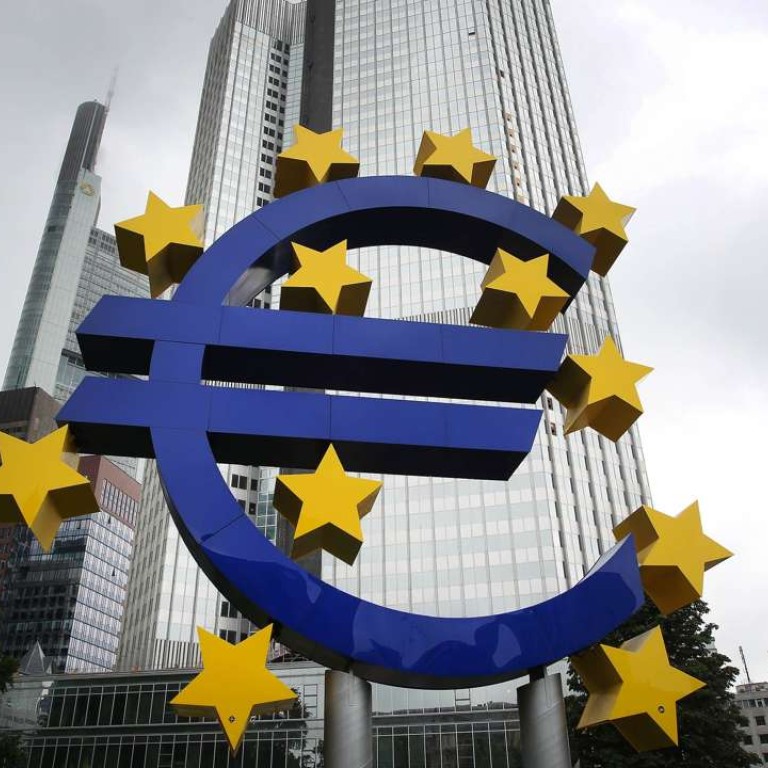
Europe’s January inflation data deserves special attention
On Tuesday, Eurostat, the European Union’s statistics bureau, will publish one of the most important pieces of international economic data.
The agency will release its flash, or preliminary, estimate for the inflation rate across the eurozone in January. In December, consumer prices in Europe’s single currency area surged to an annualised rate of just over 1 per cent, still roughly half the target of the European Central Bank (ECB) but the first time headline inflation in the eurozone exceeded 1 per cent since September 2013.
Analysts expect the rate to have increased further in January, possibly to as high as 1.6 per cent year on year, due to the “base effects” of commodity prices. Oil prices sank to below US$30 a barrel a year ago but have since risen nearly 100 per cent, which is pushing up inflation rates in both developed and developing economies.
The core, or underlying, inflation rate in the eurozone, a more accurate gauge of price pressures which strips out volatile food and energy prices, stood at just 0.9 per cent year on year in December, even a tad lower than its level in December 2015. Still, the trend is clear.
The threat of a damaging bout of deflation in the eurozone, which was still a major risk as recently as mid-2015, has been averted
The threat of a damaging bout of deflation in the eurozone, which was still a major risk as recently as mid-2015, has been averted – so much so that Germany, the arch-critic of the ECB which has been calling for an end to the central bank’s ultra-loose monetary policies, has gone on the warpath.
The headline inflation rate of Europe’s largest and most resilient economy is expected to reach an annualised rate of nearly 2 per cent in January, strengthening calls among German politicians and policymakers for the ECB to end its programme of quantitative easing (QE).
It is not just Europe which is experiencing a marked increase in inflation.
In the US, the Federal Reserve’s preferred measure of inflation – the so-called personal consumption expenditures (PCE) price index – reached 1.4 per cent in November, still significantly below the Fed’s 2 per cent target but sharply higher than the readings in 2015 which were close to zero. Another measure of inflation in the US, the consumer price index, even surpassed 2 per cent in December, the fastest year-on-year rise since mid-2014.
This is fuelling a sell-off in the yields on longer-dated government bonds, which are also being driven up by US President Donald Trump’s plans for a hefty fiscal stimulus package that is expected to ignite inflation further, forcing the Fed to raise interest rates more aggressively.
Even in Japan, which is still struggling to overcome deflation, the core inflation rate, which remains in negative territory, is expected to be positive by early spring, helped by the renewed decline in the yen since the US election. In China, meanwhile, producer prices in September rose for the first time since January 2012, allaying concerns about China exporting deflation to the rest of the world.
The question is whether the end of a deflation, or disinflation, scare means investors should start to worry about the return of inflation, fuelled by the reflationary economic policies of the new Trump administration.

In December, the ECB announced that, as of March, it would start to slow the pace of its asset purchases to €60 billion a month, a move which many analysts interpreted as a scaling back, or “tapering”, of its bond-buying programme akin to the Fed’s move in May 2013 which led to a sharp sell-off in government bonds.
Yields on eurozone sovereign debt have risen significantly, partly due to the so-called “Trumpflation” trade but also because of the uptick in inflation across the bloc and the growing realisation among investors that QE is finally coming to an end.
As Schroders, an asset manager, noted in a recent report, international investors must ask themselves: “[While] ‘lower for longer’ may have been correct for seven years, are we [now] moving towards ‘a bit higher, a bit sooner’?”
The fact that the eurozone’s core inflation rate still remains subdued warrants further monetary stimulus despite Germany’s campaign to force the ECB to prepare its exit from QE.
Yet the sharper the rise in eurozone (and particularly German) inflation, the more difficult it will become for the ECB to pursue QE.
This is why Tuesday’s inflation data out of the eurozone deserve special attention.
Nicholas Spiro is a partner at Lauressa Advisory

